Mette Helbæk: ‘We have a basic human need to connect'
Minimalism permeates Nordic culture, from design to small talk to food. But what is it about such simple cuisine that keeps Nordic restaurants fully booked? Star Danish chef Mette Helbæk tells The Local about simplicity, sustainability, and the beauty of scarcity.

Stedsans ØsterGro is one of the trendiest restaurants in Copenhagen, with seats sold out months in advance.
But Mette Helbæk, who founded the restaurant along with her husband, also likes to think of it as a “social experiment”.
“All of the guests sit together at one long table, and I tell them it’s their responsibility to give back more than they take,” Mette says. “They pour the wine themselves, and food is served family-style, on trays. So even though they don’t know each other, they have to interact and help each other.”
Sharing and “giving back” are concepts which are deeply embedded in every aspect of her restaurant. It shares a location with Østergro, a 600-square metre urban rooftop garden where organic produce grows right in the middle of Copenhagen.
“The rooftop farm gives square metres back to nature, metres we took when we built our cities,” she explains. “We don’t actually use the crops from this garden, but we do use only ingredients from farmers who care about building up top soil and giving back more to the earth than they take. And the guests have to share food and wine and tell strangers their names – and that’s not very Nordic!”
Mette and her husband Flemming have been running Stedsans for about five years now, in various locations.
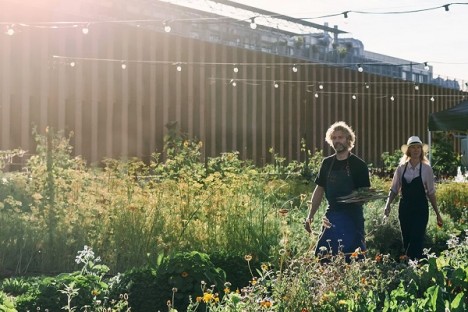
Mette and Fleming at work. Photo: Sharon Radish
Mette studied sociology and communications at university, but she was always drawn to food.
“I got my degree, but I loved cooking way more than sitting in front of a computer,” she says.
'I'm a very impatient person'
Her journey has made her a jack of all food trades, and she has run restaurants, had a famous little vegetable shop which was the first in Europe to sell only produce straight from local farmers, has written cookbooks, and worked as a food critic.
She confesses it’s less ambition and more restlessness that keeps her on the move.
Click here to read more Nordic profiles
“I’m always on the run for something better,” she says. “I’m a very impatient person and it’s hard for me to slow down and stay somewhere too long.”
Her goal is to find somewhere she really wants to stay. Somewhere peaceful and nurturing.
Perhaps someplace like Østergro, where the couple found “home” for their sustainable restaurant concept in 2014.
“I always wanted to have a restaurant at a place that really reflected the way I cook. So when we heard about the rooftop farm – the first in Scandinavia – I told Flemming, ‘This is it. This is where I want to show my food to the world. Here in these fields, with people sitting in this greenhouse in the middle of the city.’”
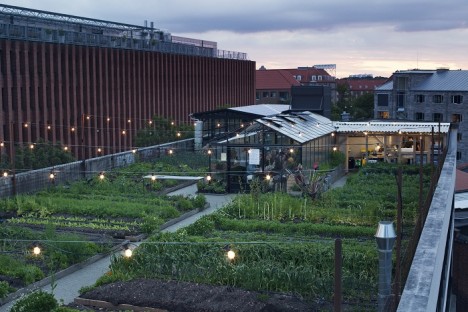
Photo: Irina Boersma
So that’s exactly what they did. The couple asked the rooftop farmers if they could build a small restaurant in the greenhouse.
“And luckily they said yes! We opened a tiny little kitchen with tiny gas burners and one tiny little oven the first season,” Mette recalls. “And people started coming from all around the world.”
A night to remember
The restaurant is only open four days a week, and seats at the single, long table are limited.
But for those who secure a spot, it’s a night to remember.
“We start preparing around 2pm and the first guests come around 5,” Mette says.
“We start early because we want the ingredients to stay as vital and fresh as possible. Then I welcome the guests, tell them about the farm, how we work, and other things they should know. And we share and have a great time.”
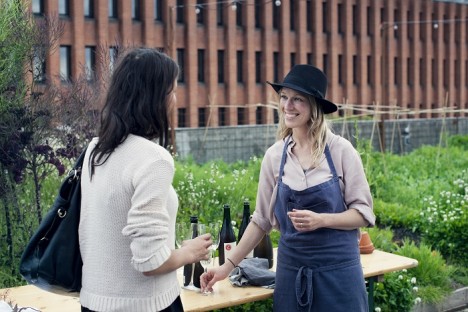
Photo: Irina Boersma
Most nights she doesn’t go home until midnight, but by the end, all of the guests have left with happy, healthy bellies and plenty of new friends.
“It’s beautiful,” Mette says. “The setting really creates magic. You’re surrounded by plants, which make you release dopamine, and we get to share with each other. We have this basic human need for connecting with others, and it makes us happy. And sharing makes us happy.”
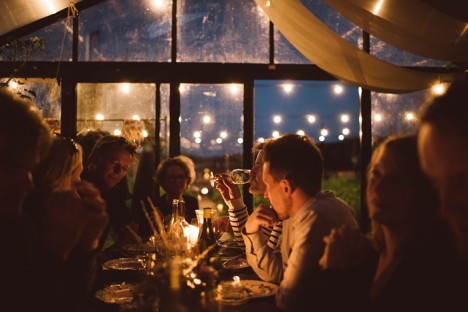
Photo: Charlotte Dupont
And while the social part of it may not be very typically Nordic, the food certainly is.
“Every week we sit down and make a new menu based on what’s available and what’s in season,” Mette says. “We call the farmers, we go to the beach, we walk outside and see what’s around. And we write all these amazing ingredients on a bucket list of sorts – we think, ‘Which of these can we simply not leave out?’”
The key to Nordic cooking
It’s more a process of selection than a process of elimination, as they try to keep each dish remarkably simple.
“The menu is basically just a list of the ingredients. Sometimes a dish only has four ingredients. It’s a minimalist way of cooking, like our furniture and clothing. My food is about showcasing the beauty in everything Mother Nature has to offer us,” she says. “We have six courses of very simple food and everyone gets the same thing.”
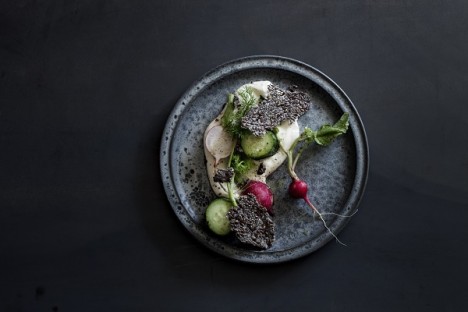
Photo: Irina Boersma
That type of minimalism, placing the highest value on the ingredients themselves rather than fancy recipes and glitzy restaurant interiors, is the heart of Nordic cuisine.
“I think that Nordic cooking is very much about the ingredients, and about looking outside, feeling, thinking, and creating a dish that makes you feel good,” Mette muses.
And the lack of options for much of the year is a critical part of that.
“Scarcity is always a very present part of the way we cook – and the way we live,” she explains. “We try not to use it all at once.”
She says that long, dark winters and short, bright summers teach people in the Nordic not to waste things all at once, but to find the truly important things and focus on those.
“It affects our lives, our food, our furniture, our clothing. We don’t give too much of ourselves as human beings. And you see this at many Nordic restaurants: They might have very little, but they’re good at showing it. We have something, small but wonderful, and we’re proud of it and we want to share it with you.”
Click here to discover more Nordic stories
This article was produced by The Local and sponsored by the Nordic Council of Ministers.
This content was paid for by an advertiser and produced by The Local's Creative Studio.

Join the conversation in our comments section below. Share your own views and experience and if you have a question or suggestion for our journalists then email us at [email protected].
Please keep comments civil, constructive and on topic – and make sure to read our terms of use before getting involved.
Please log in here to leave a comment.